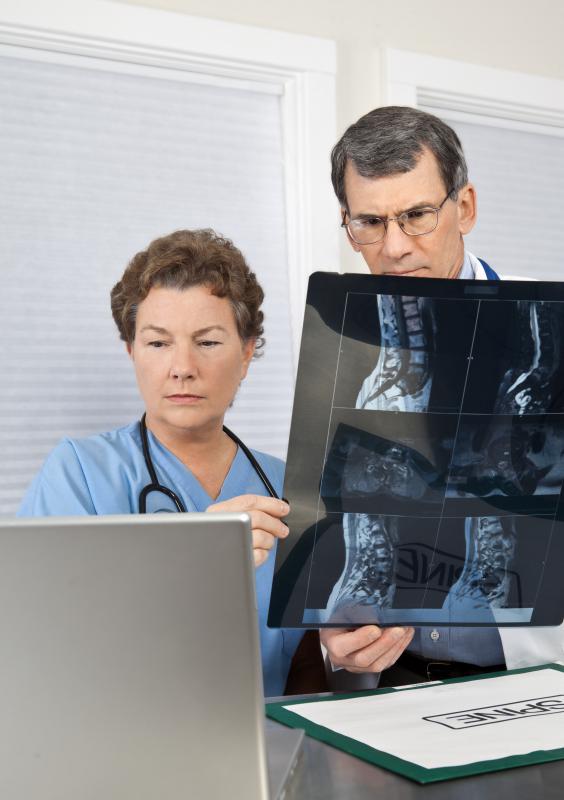At WiseGEEK, we're committed to delivering accurate, trustworthy information. Our expert-authored content is rigorously fact-checked and sourced from credible authorities. Discover how we uphold the highest standards in providing you with reliable knowledge.
What is Lordosis?
Lordosis is a type of scoliosis that affects the lumbar vertebrae in the lower back. The condition causes the spine to curve inward, making the buttocks stick out and putting significant stress on the entire back. Most cases are congenital, meaning that deformities are present at birth. Older people can also develop the condition if they have severe arthritis, osteoporosis, or a lower back injury. Treatment for lordosis depends on the severity of the curve and the age of the patient, but most people need to take pain medications and receive long-term physical therapy for the disorder.
A small amount of lumbar spine curvature is normal and necessary to properly support the torso. If the curve is severe, however, a person may not be able to sit, stand, or walk without significant discomfort. Lordosis is considered serious when the spine is inflexible, meaning that it maintains its awkward position no matter how a person adjusts his or her back.

Congenital lordosis results from genetic abnormalities that may be inherited from parents or produced by mutations that occur during fetal development. When curvature happens later in life, it is usually caused by stress on the lumbar vertebrae from an injury or excess weight gain. A person who has osteoporosis or arthritis may experience the condition when lumbar bones and joints deteriorate and slip out of their proper alignment.

A doctor can diagnose this condition by carefully examining the spine and asking a patient about his or her medical history. The physician usually asks questions about when the curvature became noticeable and what symptoms are present to try to determine an underlying cause. X-rays and computerized tomography scans are taken to help the doctor determine the severity and exact location of the problem.

The first choice of treatment for mild lordosis in children is bracing. An orthopedic specialist fits a young patient with a custom back brace that encourages straighter spine development as the child grows. An adult who suffers from this type of scoliosis is typically prescribed medications and dietary supplements to help slow the progression of degenerative conditions. Patients often need to attend regular physical therapy sessions to strengthen their leg and back muscles and learn how to remain mobile despite their condition.

Corrective surgery may be needed if curvature is severely debilitating in a child or an adult. A skilled surgeon can realign bones and nerves in the lower back and fuse lumbar vertebrae together to prevent further curving. Several rounds of surgery and years of physical therapy are usually needed for a patient to recover from the condition.
AS FEATURED ON:
AS FEATURED ON:
















Discussion Comments
How many rounds of surgery constitute several, I wonder, or does it largely depend on the degree of the curvature? How many surgeons can actually perform this surgery with the skill to resolve the condition? I would want the best in the field for any kind of back surgery, because an incompetent surgeon can do far more harm than good. I can give you some examples of what happens when a poor surgeon gets a patient.
I would definitely want a second and even third opinion, along with lots and lots of references for really good surgeons who had consistently good outcomes.
I would think the main way to help lordosis in adults is prevention. Surely, even someone who is overweight would notice that the body is changing to a marked degree, and would see a doctor.
I've seen people who obviously have this condition and I'm sure they're absolutely miserable. I knew a woman who had this and got it after childbirth. Something about how she carried the baby and that she gained most of her weight in her buttocks, for some reason. She did everything she could to get the baby weight off, but she still ended up having surgery and physical therapy.
Post your comments